Methadone has therapeutic properties making it an essential option for those seeking relief and recovery. It has been shown to reduce withdrawal symptoms and cravings in persons addicted to opioids such as heroin and morphine. However, methadone, like any other powerful medicine, has potential adverse effects that patients should be aware of to make informed and safe treatment decisions.
Let’s jump into this blog to understand the side effects.
Understanding Methadone
Methadone works by attaching to opioid receptors in the brain, which reduces pain and stabilizes mood. Methadone, unlike other opioids, has a lengthy half-life, which means it stays in the bloodstream for longer, allowing for more continuous comfort. It is normally given under medical supervision because it requires precise dose and monitoring. Don’t worry; it is an FDA-approved medicine that helps individuals in the recovery process and reclaims an active lifestyle.
Common Side Effects of Methadone
While methadone is beneficial in the treatment of addiction, it does come with potential side effects. These side effects can vary in severity and may depend on factors such as dosage, individual response, and whether methadone is used alongside other substances.
1. Drowsiness and Fatigue
One of the most common side effects of methadone, especially when starting treatment, is drowsiness. Methadone has sedative properties that can make patients feel excessively tired or fatigued. This can interfere with daily activities, and it’s important for patients to avoid operating heavy machinery or driving until they understand how methadone affects them.
2. Constipation
Methadone, like other opioids, can slow down the digestive system, leading to constipation. This side effect can be managed with lifestyle changes such as increasing fiber intake, drinking plenty of fluids, and regular physical activity. In some cases, patients may be prescribed stool softeners or laxatives to alleviate this discomfort.
3. Increased Sweating
Excessive sweating is another common side effect. Patients may find themselves sweating more than usual, especially during sleep. Wearing lightweight clothing and using cooling products can help manage this issue, but it is important to inform a healthcare provider if the sweating becomes bothersome.
4. Nausea and Vomiting
Some individuals experience nausea or vomiting, particularly when starting methadone treatment or adjusting to a new dose. Taking methadone with food may help reduce this side effect. If nausea or vomiting persists or becomes severe, it is essential to contact a healthcare provider for further guidance.
5. Weight Gain
Methadone has been associated with changes in appetite and metabolism, which can lead to weight gain. While not all patients will experience this side effect, it’s essential to monitor weight during treatment. A balanced diet and regular exercise can help manage weight gain and promote overall health.
6. Sleep Disturbances
Some people taking methadone report trouble sleeping, whether it’s difficulty falling asleep or staying asleep. Patients should discuss any sleep issues with their healthcare provider to determine the best course of action, which might include adjusting the dose or integrating sleep aids as part of their recovery.
7. Sexual Dysfunction
In some cases, methadone can cause changes in sexual function, including reduced libido or erectile dysfunction. This side effect is often reversible by adjusting the dose or exploring other treatment options.
Serious Side Effects of Methadone
While most side effects of methadone are mild to moderate, there are some serious risks associated with its use. These are rarer but require immediate medical attention.
1. Respiratory Depression
Methadone can depress the respiratory system, leading to slower or shallow breathing. This is especially dangerous when combined with other central nervous system (CNS) depressants, such as alcohol, benzodiazepines, or other opioids. Severe respiratory depression can lead to coma or death. Patients should never take methadone in combination with other CNS depressants without the explicit approval of their healthcare provider.
2. Overdose
Methadone overdose is a serious concern, especially if the medication is misused or taken in excessive amounts. Symptoms of overdose include extreme drowsiness, slow or difficult breathing, pinpoint pupils, and loss of consciousness. Overdose is a medical emergency that requires immediate attention. Patients who are prescribed methadone should always follow their prescribed dosage and never take more than recommended.
3. QT Prolongation and Heart Issues
Methadone can affect the heart’s electrical activity, leading to QT prolongation, a condition that can cause abnormal heart rhythms (arrhythmias). This can increase the risk of sudden cardiac arrest. Patients with a history of heart problems or those on medications that affect heart rhythm should be monitored closely while on methadone.
4. Allergic Reactions
Though rare, some patients may experience allergic reactions to methadone. Symptoms may include rash, itching, swelling, or difficulty breathing. In severe cases, an allergic reaction can lead to anaphylaxis, which requires immediate emergency treatment.
Managing Side Effects and Ensuring Safe Use
To ensure that methadone treatment is safe and effective, it’s important for patients to follow a few essential guidelines:
- Stick to the prescribed dosage: Never take more or less methadone than prescribed. Taking too much can increase the risk of side effects and overdose, while taking too little may not provide the desired therapeutic effects.
- Avoid alcohol and other CNS depressants: Alcohol and certain medications can intensify methadone’s sedative effects, increasing the risk of life-threatening respiratory depression. Always discuss other medications or substances with your healthcare provider.
- Regular medical check-ups: Methadone treatment requires ongoing monitoring. Patients should attend regular appointments to assess their response to treatment and ensure that the dosage remains appropriate.
- Communicate openly with your provider: If you experience any side effects, especially severe ones, it’s important to inform your healthcare provider right away. Adjustments to the treatment plan may be necessary to address issues.
Methadone and Mental Health
Methadone treatment often goes hand-in-hand with Mental Health Treatment, particularly for individuals with co-occurring mental health conditions such as depression, anxiety, or trauma. For many patients, Mental Health Therapy is an essential component of recovery, as it addresses underlying emotional and psychological factors contributing to addiction.
How Methadone Works in the Body
Methadone is a long-acting opioid agonist that works by stimulating the same opioid receptors in the brain as other opioids like heroin or morphine. However, unlike these illicit substances, methadone’s effects are slower and more controlled. This allows it to reduce cravings and withdrawal symptoms without producing the euphoric “high” that comes from heroin or other opioids.
When used in Addiction Treatment Programs, methadone helps individuals in recovery manage the intense physical and psychological cravings that often lead to relapse. By occupying the opioid receptors in the brain, methadone prevents withdrawal symptoms and reduces the desire for illicit drugs, allowing patients to focus on their recovery and rebuilding their lives.
Methadone’s long-acting nature makes it ideal for opioid maintenance therapy, as it typically requires only one dose per day, providing steady relief throughout the day. This can significantly improve the quality of life for individuals in recovery, helping them regain a sense of stability.
The Importance of Monitoring While on Methadone
While methadone is highly effective for treating opioid addiction, regular monitoring is essential to ensure the medication remains effective and safe. Methadone can have significant side effects, particularly if the dosage is too high, too low, or if it’s combined with other substances such as alcohol or benzodiazepines.
Routine monitoring includes checking the patient’s heart rate, blood pressure, and respiratory function. This is especially important because methadone can affect heart rhythms and slow down breathing. Patients should attend scheduled appointments with their healthcare provider, where their response to methadone can be assessed and the dosage adjusted as needed. Monitoring helps ensure that methadone treatment is working as intended and can prevent potential complications such as overdose or adverse reactions.
In addition to physical monitoring, ongoing mental health assessments are crucial. Methadone is typically prescribed as part of a holistic treatment approach, which includes Mental Health Therapy to address underlying conditions like anxiety, depression, or trauma that may contribute to addiction.
Methadone Maintenance vs. Detoxification
Methadone is used in two primary ways in addiction treatment: maintenance therapy and detoxification. Both approaches have distinct purposes and benefits, depending on the individual’s needs.
- Methadone Maintenance Therapy: This is a long-term treatment strategy for individuals with Opioid Use Disorder. Methadone is used to help stabilize patients and prevent cravings, allowing them to focus on recovery without the pressure of withdrawal symptoms. Maintenance therapy can last for months or even years, and it is typically combined with other therapies, such as counseling and Addiction Therapy Programs, to support mental and emotional healing.
- Methadone Detoxification: This involves using methadone for a shorter period to help individuals gradually reduce their dependence on opioids. Detoxification is typically part of an initial phase in recovery and aims to minimize withdrawal symptoms while allowing the patient to slowly taper off opioids. This approach is usually followed by transition to other recovery support systems, including Intensive Outpatient Programs (IOP) or Outpatient Treatment Programs.
The Role of Therapy in Methadone Treatment
While methadone is highly effective at managing the physical aspects of addiction, it is most beneficial when combined with therapy. Mental Health Treatment plays a vital role in addressing the emotional, psychological, and behavioral aspects of addiction. Methadone should not be viewed as a standalone treatment but as part of a comprehensive recovery plan that includes Addiction Therapy Programs.
Therapy Options for Methadone Patients:
- Cognitive Behavioral Therapy (CBT): This form of therapy helps individuals identify and change negative thought patterns that may contribute to addiction. CBT is often used in conjunction with methadone treatment to help patients develop coping skills and strategies to manage cravings and triggers.
- Dialectical Behavior Therapy (DBT): DBT is effective for individuals with co-occurring mental health disorders, such as depression or anxiety, that may complicate addiction recovery. It focuses on emotional regulation, interpersonal effectiveness, and distress tolerance.
- Group Therapy: Group therapy provides a supportive environment where patients can connect with others going through similar challenges. This sense of community is essential for those recovering from opioid addiction.
- Individual Counseling: One-on-one therapy allows patients to work closely with a therapist to address specific issues related to their addiction, mental health, and recovery goals.
Want to Get Rid of Methadone Side Effects? Join Hands with River Rocks Recovery!
If methadone side effects are causing serious threats to you, it’s time to choose the recovery station. And, River Rocks Recovery can be your best addiction treatment center. We have a team of dedicated professionals who understand you and offer you complete heath solutions be it therapy, an addiction treatment program, detox, or more. So, why wait? Call us now to kick-start your new journey!
Conclusion
Methadone is an effective medication for treating opioid addiction and managing withdrawal symptoms. However, it is not without its potential side effects. Patients must be aware of the common and serious side effects and work closely with their healthcare provider to manage their treatment safely. By attending regular medical check-ups, following prescribed guidelines, and being open about any issues, patients can make methadone a safe and effective part of their recovery journey. Embrace the comprehensive care offered at River Rocks Recovery, and contact us today at (888) 905-6281.
FAQ on Methadone Treatment
What is Methadone, and how does it work in the body?
Methadone is a long-acting opioid agonist used primarily to treat opioid addiction. It helps prevent withdrawal symptoms and cravings by occupying the same brain receptors as opioids but without producing the euphoric high. It allows patients to function normally while they focus on their recovery.
What are the common side effects of Methadone?
Common side effects of methadone include constipation, dizziness, drowsiness, and nausea. More serious side effects, like respiratory depression, irregular heartbeat, and overdose, require immediate medical attention.
How is methadone different from detoxification and maintenance therapy?
Methadone detoxification involves short-term use of the drug to ease withdrawal symptoms and help patients gradually reduce dependence. Methadone maintenance, on the other hand, is a long-term treatment approach that stabilizes patients and helps prevent relapse by providing consistent doses of methadone.
When should I seek medical help while on methadone?
If you experience severe side effects like difficulty breathing, chest pain, slow heartbeat, or signs of an overdose (e.g., loss of consciousness, pinpoint pupils), seek emergency medical care immediately. For less serious side effects, consult your healthcare provider for guidance.
Does therapy play a role in methadone treatment?
Yes, therapy is an essential part of methadone treatment. Combining methadone with counseling, such as Cognitive Behavioral Therapy (CBT) or Dialectical Behavior Therapy (DBT), addresses the emotional and psychological aspects of addiction, promoting long-term recovery.





























